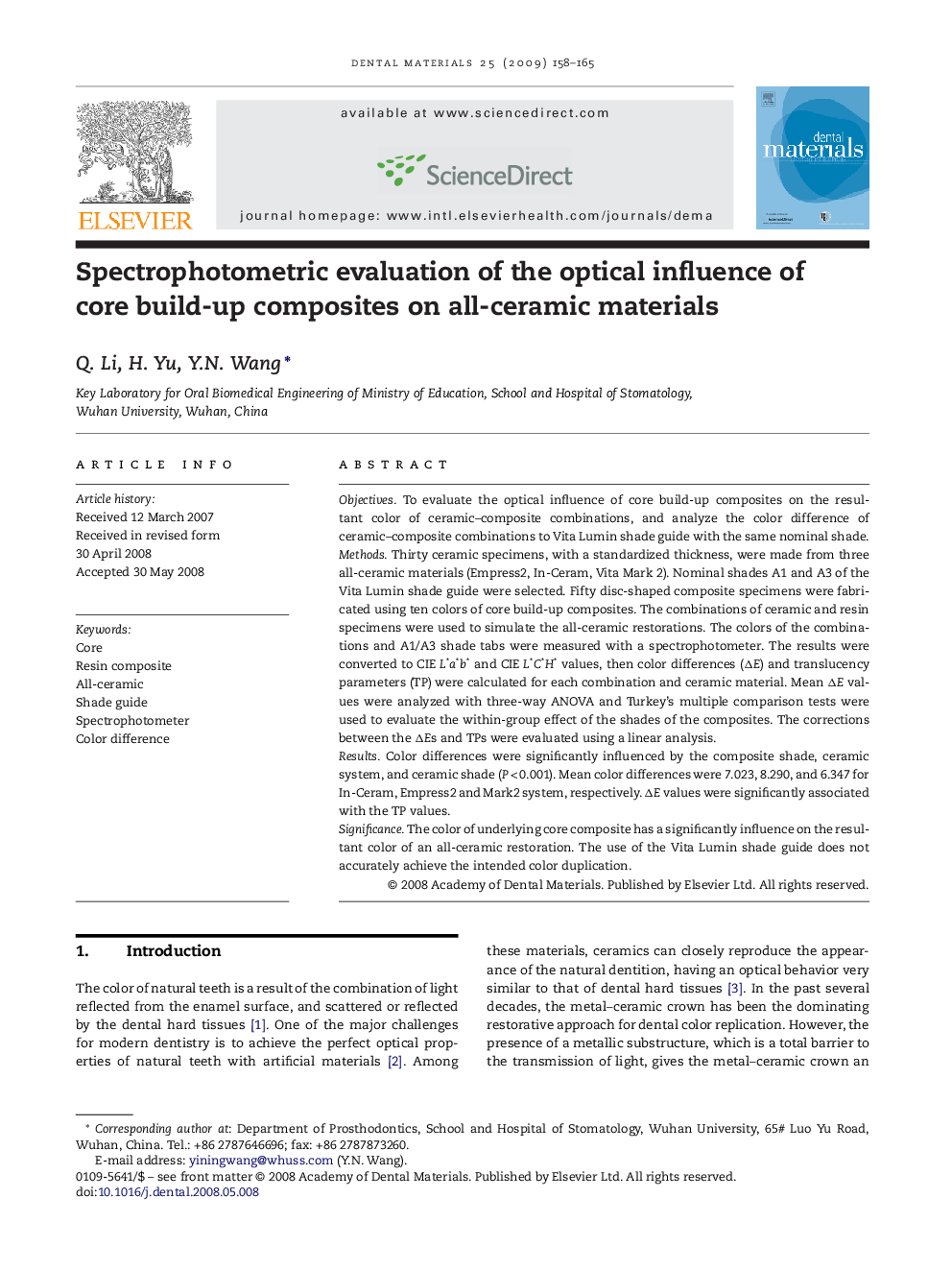| Article ID | Journal | Published Year | Pages | File Type |
|---|---|---|---|---|
| 1423068 | Dental Materials | 2009 | 8 Pages |
ObjectivesTo evaluate the optical influence of core build-up composites on the resultant color of ceramic–composite combinations, and analyze the color difference of ceramic–composite combinations to Vita Lumin shade guide with the same nominal shade.MethodsThirty ceramic specimens, with a standardized thickness, were made from three all-ceramic materials (Empress2, In-Ceram, Vita Mark 2). Nominal shades A1 and A3 of the Vita Lumin shade guide were selected. Fifty disc-shaped composite specimens were fabricated using ten colors of core build-up composites. The combinations of ceramic and resin specimens were used to simulate the all-ceramic restorations. The colors of the combinations and A1/A3 shade tabs were measured with a spectrophotometer. The results were converted to CIE L*a*b* and CIE L*C*H* values, then color differences (ΔE) and translucency parameters (TP) were calculated for each combination and ceramic material. Mean ΔE values were analyzed with three-way ANOVA and Turkey's multiple comparison tests were used to evaluate the within-group effect of the shades of the composites. The corrections between the ΔEs and TPs were evaluated using a linear analysis.ResultsColor differences were significantly influenced by the composite shade, ceramic system, and ceramic shade (P < 0.001). Mean color differences were 7.023, 8.290, and 6.347 for In-Ceram, Empress2 and Mark2 system, respectively. ΔE values were significantly associated with the TP values.SignificanceThe color of underlying core composite has a significantly influence on the resultant color of an all-ceramic restoration. The use of the Vita Lumin shade guide does not accurately achieve the intended color duplication.
